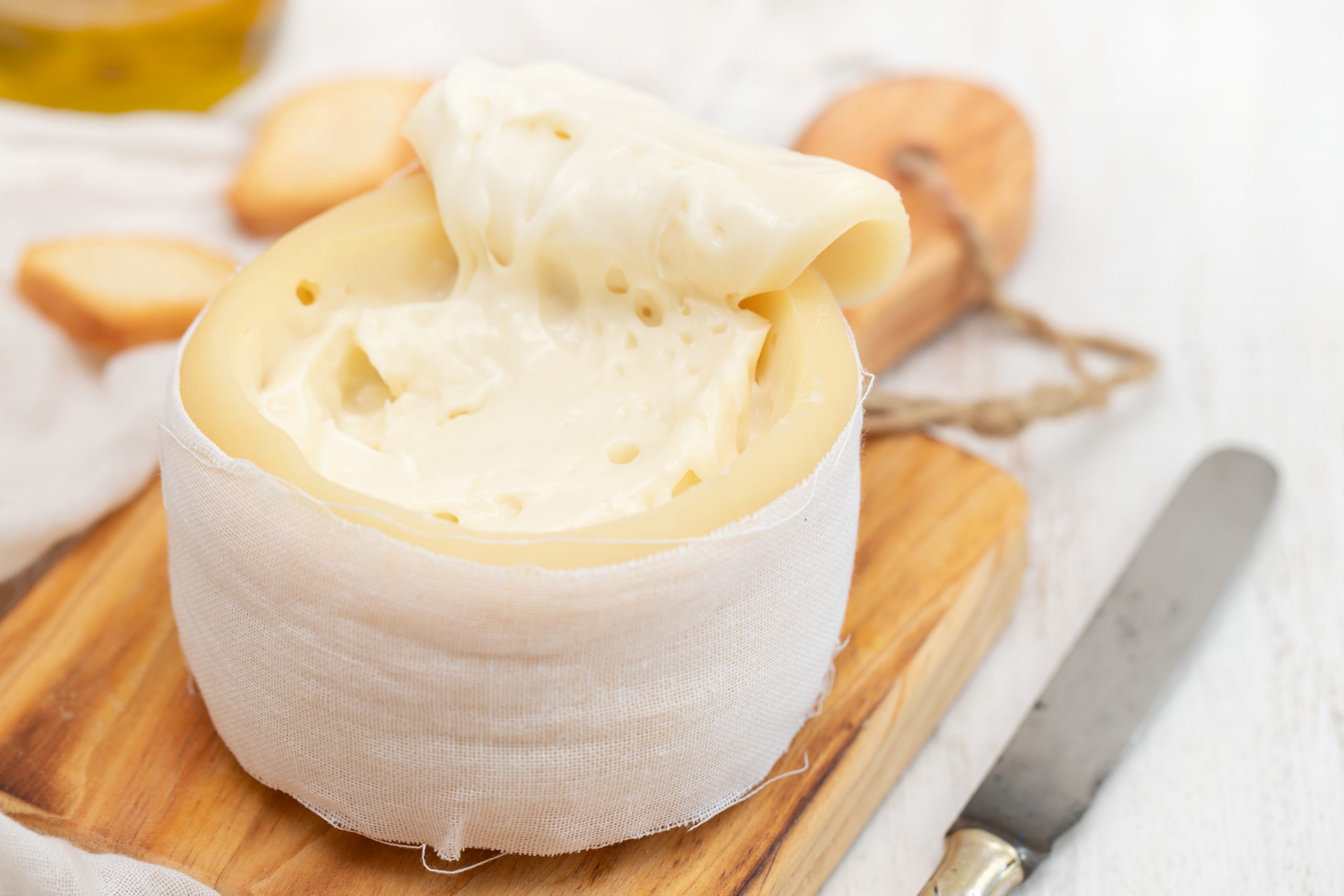Cheese is lovingly produced throughout Portugal, from the mainland to the Azores, dating back to Roman occupation times. Regions honour tradition by curating their speciality cheeses, which come in all shapes, sizes, and flavours. These delicious, buttery, nutty, diverse cheeses are typically served on the table in homes and Portuguese restaurants, often alongside bread, olives, and ham as the couvert (starters). Cheeses are usually made from raw sheep or goat milk due to the rocky and mountainous terrain of mainland Portugal, which creates distinct, buttery, and nutty tastes, as well as strong, salty aromas. In contrast, cured cow’s milk cheeses are more typical of the Azores. Many of them are made using sustainable thistle flower vegetable rennet. Cheeses in Portugal are both made on an industrial scale and on a more traditional, handmade scale in queijarias. Despite producing some of the most unique and fantastic cheeses in the world, Portugal lacks the acclaim of France. Still, it honours its well-preserved culinary traditions through queijeiros (cheesemongers) who pour generations of knowledge into every delicious wheel. Highlights include the Queijo da Serra, Queijo de Azeitão, Queijo de Cabra Transmontano, Queijo São Jorge, and so many more fantastic options across Portugal.
Queijo da Serra da Estrela, or Queijo da Serra, is one of the most well-known spectacular cheeses of Portugal and the most popular, with a DOP status in the EU and UK. It’s made using raw milk exclusively from the Bordaleira Serra da Estrela or Churra Mondegueira sheep breeds, regional thistle flower rennet to coagulate the cheese, and then cured for 30-120 days, which allows the flavour to age and mature. The result is an indulgent, semi-soft, salty, and buttery cheese with a creamy white colour, a testament to its creamy, nutty, and rich flavour. Simply slice the rind off the top of the Queijo da Serra, as you would for a baked French Camembert, and lift to reveal a gooey, semi-liquid cheese at room temperature, no baking needed! The younger the cheese, the creamier it is, so pair this melt-in-the-mouth spreadable cheese with bread and ham in the couvert while it’s still young.
Queijo de Azeitão is another delightful, melt-in-the-mouth semi-soft sheep’s milk cheese that hails from the region of Azeitão, in the district of Setúbal, and holds a DOP status. Queijo de Azeitão is made from the raw milk of local sheep that feed on the unique pastures of the Azeitão region, and then coagulated with the same thistle rennet as Queijo da Serra. The result is a similarly indulgent and buttery delight to the Serra, but with a unique, sour, salty, herbaceous, and powerful taste that comes from the specific soil and climate conditions of the pastures the sheep graze on. Therefore, Azeitão cheese is a truly unique and delicious experience that you can’t get anywhere else in the world, pairing perfectly with fresh fruit like figs, crusty bread, and a glass of sweet Port.
Queijo de Cabra Transmontano is a semi-hard to extra-hard cheese with a satisfyingly sumptuous bite, made with goat milk from the Alto Trás-os-Montes, Norte Region and ripened for 60-90 days. The cheese holds a DOP status and is also listed on the Ark of Taste, so it’s certainly nothing to scoff at, and is available in two varieties: Queijo de Cabra Transmontano and Queijo de Cabra Transmontano Velho. This mature, beautiful cheese is pleasantly mild, with a slightly tangy aftertaste as it melts in the mouth and has a slightly grainy texture which contributes to its unique flavour profile. This complex and unique cheese pairs beautifully with breads and salads, as well as nuts like walnuts and hazelnuts, which enhance its robust taste profile unlike any other cheese.
Queijo São Jorge is another unique and beautiful, semi-hard to hard cheese which is produced in the Portuguese archipelago of the Azores, also with a DOP status that ensures this special cheese is still made with traditional methods on the island. Unlike typical Portuguese cheeses made with sheep and goat milk, this strong and spicy São Jorge is made with cow’s milk from local cows that graze on lush pastures on the island’s volcanic soil and then aged for a minimum of 90 days. The result is a silky smooth, robust, clean, and spicy semi-hard cheese that becomes more intense the longer it ages, developing an addictive peppery flavour. It’s often eaten in slices and used in cooking, pairing wonderfully with red wine and Port for a unique and delicious experience.

